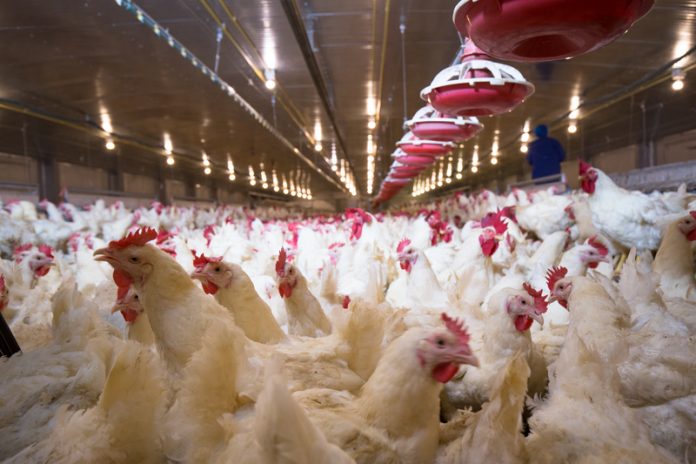The chicken industry has become one of the fastest growing livestock industries around the world due to the demand for high-quality protein by consumers. Today, modern-day broiler chickens can reach a body weight of 2 kilograms by 35 days, which represents an increase of an astonishing 5000% of their body mass. This remarkable and outstanding performance is the results of intensive genetic selection for growth rate, rigorous programs of health and management, as well as meticulous feed and nutrition programs. Feed efficiency, which is the capacity to transform vegetable protein into animal protein is considered the “money saver”, since ~ 70% of the total production cost is directly related to the feed. Therefore, any chronic subclinical disease that affects the gastrointestinal tract such as coccidiosis, or necrotic enteritis, is economically more upsetting than acute infections. Likewise, dietary factors that modulate the immune system, gut health and gut microbiota are considered crucial when formulating diets and managing feeding practices. Every year, genetic lines are working to increase the performance of broiler chickens. As a result, we see that the growth period and feed efficiency are continuously improved. Hence, health care and nutrition of these birds are becoming more demanding. Perhaps, that is the reason the fields of immunology, microbiology, and nutrition have joined in a surprising way in the last two decades. Several investigators have shown how dietary ingredients have a profound effect on the composition of the gut microflora, which in turn, controls the physiology of all animals. As such, nutritional components of the diet are of critical importance not only for meeting the nutrient requirements of the host but also for the microbiome. During their coevolution, bacterial microbiota has established multiple mechanisms to influence the eukaryotic host, in a beneficial fashion. The microbiome encrypts a variety of metabolic functions that complements the physiology of their hosts.
Over a century ago Eli Metchnikoff proposed the revolutionary idea to consume viable bacteria to promote health by modulating the intestinal microflora. The idea is more applicable now than ever since bacterial antimicrobial resistance has become a serious worldwide problem both in the medical and agricultural fields. The impending ban of antibiotics in animal feed due to the current concern over the spread of antibiotic resistance genes makes a compelling case for the development of alternative prophylactics. Nutritional approaches to counteract the debilitating effects of stress and infection may provide producers with useful alternatives to antibiotics. Improving the disease resistance of animals grown without antibiotics will not only benefit the animals’ health, welfare, and production efficiency but is also a crucial strategy in the effort to improve the microbiological safe status of poultry.
In recent years, gut health research has been extensively studied in human health programs, where nutritional interventions, such as probiotics, are used to ameliorate inflammatory and allergic diseases.
Nevertheless, today, gut health is a major topic for research not only in humans but also in animals and it is now generally conceded that maintenance or enhancement of gut health is far more complex than just the modulation of the gut microflora through probiotics. This is not surprising considering that the gut harbours more than 640 different species of bacteria, contains over 20 different hormones, digests and absorbs the vast majority of nutrients, accounts for 20% of body energy expenditure and it is also the largest immune organ in the body. Therefore, anything that affects the health of the gut will undoubtedly influence the animal as a whole. Consequently, ‘gut health’ is highly complex and encompasses the macro and microstructural integrity of the gut; the balance of the microflora; and the status of the immune system. Nowadays, beneficial bacteria-host interactions are considered an integral part of development and evolution. While largely studied because of their harmful effects on human health, there is growing appreciation that bacteria are important partners for invertebrates and vertebrates. Probiosis, although not a new concept, has only recently begun to receive an increasing level of scientific interest. In agriculture, probiotics and direct fed microbials used in animal feed are becoming accepted as potential alternatives to antibiotics for use as growth promoters, and in selected cases, for control of specific enteric pathogens. A probiotic is defined as a live microbial food supplement which benefits the host by improving its intestinal microbial balance. The presence of normal gut microflora may improve the metabolism of the host animals in various ways, including absorptive capacity, protein metabolism, energy metabolism, fibre digestion, and gut maturation. Balanced gastrointestinal microflora and immunestimulation are major functional effects attributed to the consumption of probiotics. Many probiotic effects are mediated through immune regulation, particularly through balance control of pro-inflammatory and anti-inflammatory cytokines.
During the last 15 years, our laboratories have worked toward the identification of probiotic candidates for use in poultry. A defined lactic acid bacteria base probiotic culture (FloraMax-B11®) has demonstrated accelerated development of normal microflora in chickens and turkeys, providing increased resistance to
Salmonella spp. infections. Published experimental and commercial studies have shown that these selected probiotic organisms can reduce idiopathic diarrhoea in commercial turkey brooding houses. Large scale commercial trials indicated that appropriate administration of this probiotic mixture to turkeys and chickens increased performance and reduced costs of production. Further studies demonstrated that the administration of this probiotic one hour after Salmonella Enteritidis challenge had no effect during the first 12 hours on increasing cecal colonization by this pathogen. However, marked and rapid decreases were observed between 12 and 24 hours post-challenge. Later, using the same challenge model and microarray analysis of gut mRNA expression, gene expression differences in birds treated with this probiotic were observed compared to saline-treated birds, suggesting that this probiotic shares anti-inflammatory and anti-oxidant properties that may be related with gut barrier integrity.
Guillermo Tellez,
D.V.M., Ph.D.
Research Professor and Associate Director PHL
Center of Excellence in Poultry Science
University of Arkansas
Tel: (479) 575 8495
gtellez@uark.edu











